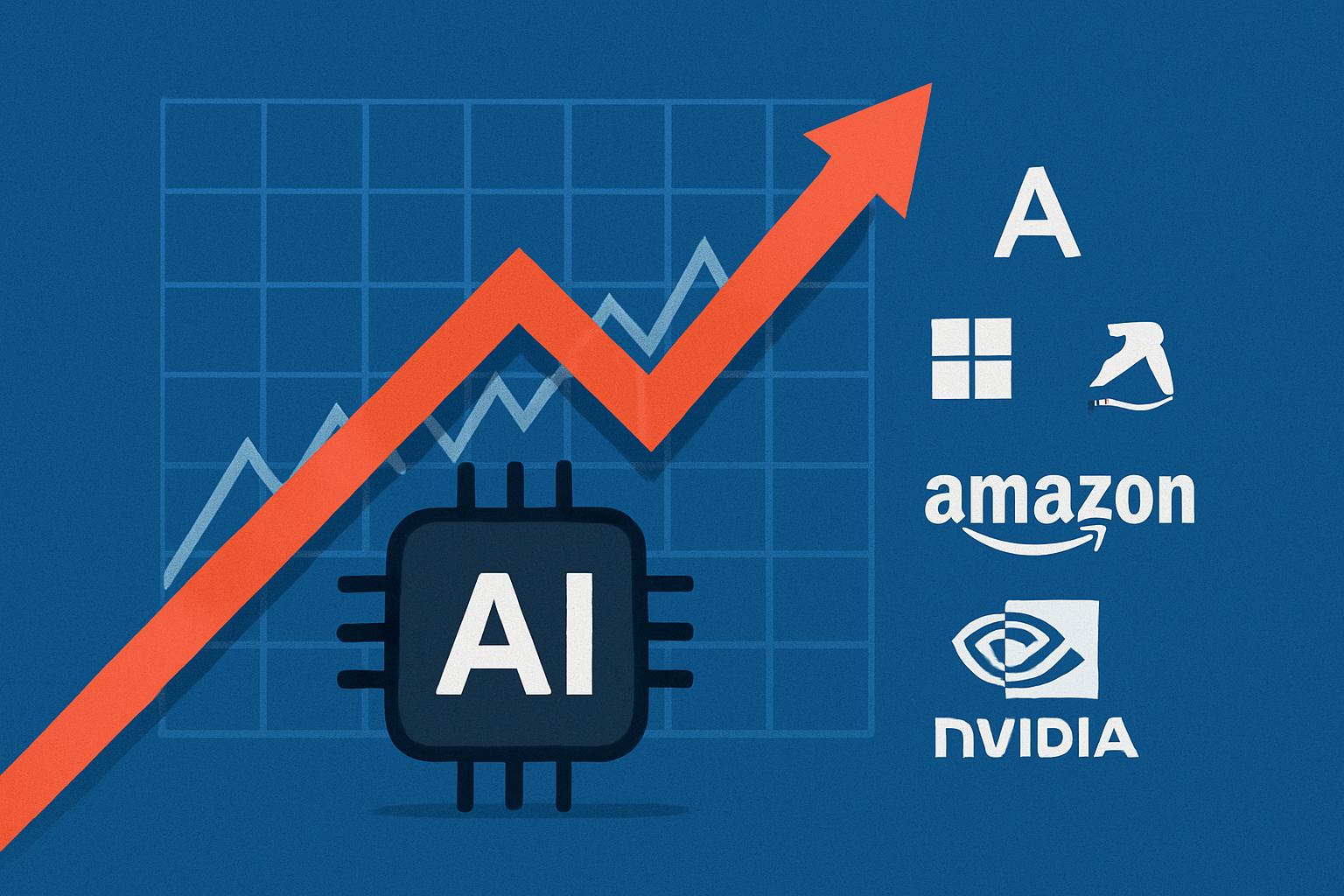Investors Question Whether the AI Boom Has Peaked — Analysts Say “Not Yet”
The artificial intelligence frenzy that has powered Wall Street’s 2025 rally shows no signs of cooling. From chipmakers like Nvidia (NASDAQ: NVDA) and AMD (NASDAQ: AMD) to software giants like Microsoft (NASDAQ: MSFT) and Alphabet (NASDAQ: GOOGL), AI remains the core driver of market sentiment. Yet, as valuations stretch and earnings growth decelerates, investors are asking the billion-dollar question: is this the peak of the AI trade — or just the beginning?
According to a Reuters analysis, today’s market exuberance is far from the speculative extremes of the dot-com bubble. Analysts argue that, while valuations for mega-cap tech stocks appear lofty, the structural growth potential from AI innovation — spanning data infrastructure, cloud computing, and automation — could justify current multiples.
Why This Matters for Investors
The “Magnificent Seven” — Apple, Microsoft, Alphabet, Amazon, Meta, Tesla, and Nvidia — have collectively added more than $6 trillion in market capitalization since 2023. Nvidia alone has surged over 280% in two years, thanks to relentless demand for AI chips used in data centers and model training. However, market concentration has become a growing concern, with these seven names accounting for nearly 40% of the S&P 500’s total weighting, according to FactSet.
Despite these record valuations, analysts see fundamental support beneath the surface. “We’re not at the peak of a bubble — we’re at base camp,” said a senior strategist quoted by Reuters. “Earnings are actually coming through, unlike 2000, when expectations ran ahead of revenue reality.”
The current AI wave is underpinned by tangible adoption across sectors — from financial services deploying predictive analytics to manufacturers implementing AI-driven logistics optimization. The difference, experts argue, is that today’s AI investments are generating measurable productivity gains, providing a foundation for sustainable returns.
A Closer Look at the Numbers
Recent data highlights the durability of the AI trade:
- AI-related ETFs have seen inflows of more than $24 billion in 2025 alone, according to Bloomberg Intelligence.
- Nvidia’s revenue for the last quarter jumped 112% year-over-year, driven by hyperscaler demand for its H200 and Blackwell GPU systems.
- Microsoft’s Azure AI revenue grew 21%, and Alphabet’s Cloud AI division posted record margins as enterprise adoption accelerated.
- Meanwhile, venture capital investment in AI startups topped $68 billion in the first half of 2025, per PitchBook data, underscoring strong institutional confidence.
Still, not all signals are green. The NASDAQ 100’s forward P/E ratio hovers near 31, above its 10-year average of 25. Rising bond yields and the prospect of delayed Federal Reserve rate cuts could weigh on growth stocks if earnings momentum slows.
Future Trends to Watch
1. AI Infrastructure Expansion – The next leg of growth may come from the “picks and shovels” of AI: data centers, cloud infrastructure, and energy solutions. Companies like Broadcom (NASDAQ: AVGO) and Arista Networks (NYSE: ANET) are seeing surging demand from hyperscalers building out AI capacity.
2. Energy and Sustainability – Power consumption by AI data centers has tripled since 2022, according to IEA estimates. This is prompting interest in alternative energy plays — from nuclear innovation to grid modernization — as investors look for secondary beneficiaries of the AI boom.
3. Global Expansion of AI Investment – Japan, South Korea, and the EU are accelerating domestic AI infrastructure funding to reduce reliance on U.S. tech. This global diversification could create new regional growth opportunities, especially in semiconductor supply chains.
4. Regulatory and Policy Risks – Policymakers in the U.S. and EU are ramping up scrutiny over AI ethics and antitrust risks. While regulation may introduce short-term volatility, it could also stabilize the sector long-term by setting clearer operational frameworks.
Key Investment Insight
For growth-oriented investors, the takeaway is clear: the AI-driven rally may still have legs, but discipline is essential. Analysts recommend maintaining exposure to leading AI beneficiaries — particularly those with robust earnings visibility and cash flow strength — while trimming positions in overextended names.
For more conservative investors, consider diversifying into AI-adjacent sectors such as cybersecurity, cloud infrastructure, and energy technology — all of which stand to benefit from continued AI adoption without the same valuation pressure as megacaps.
As Reuters notes, “AI isn’t a short-term trend — it’s the backbone of the next decade’s economic productivity story.” Staying positioned for that shift may be one of the most important strategic calls investors make in 2025.
Stay Ahead with MoneyNews.Today
The AI revolution is reshaping markets — from chips to cloud to capital flows. For daily insights, in-depth analysis, and expert perspectives on where the next opportunities lie, follow MoneyNews.Today — your trusted source for global investor intelligence.





